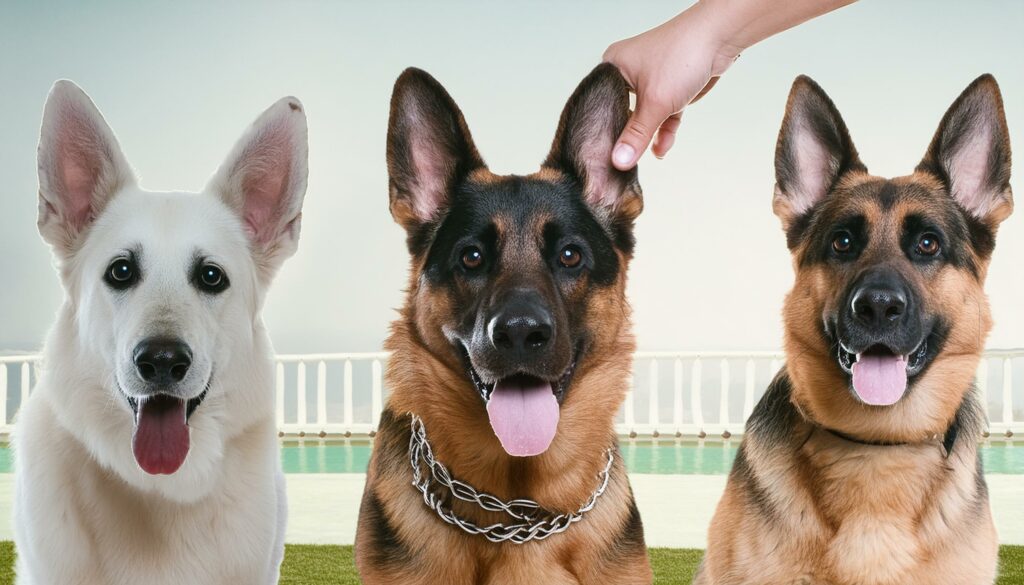German Shepherds, known for their intelligence and loyalty, thrive on learning and mastering commands. Teaching them commands in German not only adds a cultural touch but also provides mental stimulation and strengthens the bond between you and your dog. In this guide, we’ll delve into the process of teaching German commands to your German Shepherd, from understanding the importance of language to implementing effective training techniques.
Understanding the Importance of German Commands
Establishing Clear Communication
Clear communication is vital in any relationship, including the one you share with your German Shepherd. Dogs, including German Shepherds, respond well to consistent verbal cues. By teaching commands in German, you establish a distinct language for training, reducing confusion and enhancing obedience.
Tapping into Their Heritage
German Shepherds have a rich heritage rooted in Germany, where they were originally bred for herding and guarding purposes. German commands resonate with their ancestry, making it easier for them to understand and respond to cues. Using German commands not only pays homage to their history but also taps into their innate understanding of the language.
Preparing for Training

Creating a Positive Environment
Before embarking on the training journey, ensure you create a positive and conducive environment for both you and your dog. Choose a quiet and distraction-free space where you can focus solely on training. Remove any potential hazards and keep training sessions short but frequent to maintain your dog’s interest and attention.
Gathering Essential Supplies
Gather all the necessary supplies before starting training sessions. This includes treats, a leash, a collar, and possibly a clicker for clicker training. Treats serve as positive reinforcement and motivate your German Shepherd to follow commands. Opt for high-value treats that your dog finds irresistible, such as small pieces of cooked chicken or cheese.
Basic German Commands for German Shepherds
Sitz (Sit)
The “Sitz” command instructs your German Shepherd to sit on command. Start by holding a treat close to your dog’s nose, then raise your hand above their head, causing them to look up and naturally sit down. As they sit, say the word “Sitz” and reward them with the treat. Repeat this process until they reliably respond to the command.
Platz (Down)
The “Platz” command signals your German Shepherd to lie down. Begin with your dog in a sitting position, then hold a treat in your hand and lower it to the ground in front of them. As they follow the treat, say the word “Platz” and reward them when they lie down. Consistently reinforce this command until they respond promptly.
Bleib (Stay)
The “Bleib” command teaches your German Shepherd to stay in one place until released. Start by commanding your dog to sit or lie down, then take a step back while holding your hand up in a stop gesture. Say the word “Bleib” firmly and wait a few seconds before returning to reward them. Gradually increase the duration of the stay as your dog becomes more proficient.
Hier (Come)
“Hier” instructs your German Shepherd to come to you. Begin by kneeling down and encouraging your dog to approach you using a treat or toy. As they come towards you, say the word “Hier” and reward them when they reach you. Repeat this process, gradually increasing the distance between you and your dog.
Fuß (Heel)
The “Fuß” command teaches your German Shepherd to walk beside you in a controlled manner. Start by holding a treat in your hand and holding it at your side, then begin walking. As your dog walks beside you, say the word “Fuß” and reward them with the treat. Maintain a consistent pace and reward them for staying close to your side.
Aus (Drop It)
“Aus” instructs your German Shepherd to release an object from their mouth. Begin by offering your dog a toy or object to hold, then say the word “Aus” and gently remove the item from their mouth. Immediately reward them with praise and a treat. Practice this command regularly to reinforce the behavior.
Gib Laut (Speak)
“Gib Laut” encourages your German Shepherd to bark on command. Start by engaging your dog in play or getting them excited, then say the phrase “Gib Laut” and wait for them to bark. As soon as they bark, reward them with praise and a treat. Repeat this process, gradually phasing out the need for excitement to elicit the bark.
Advanced German Commands
Bring (Fetch)
“Bring” teaches your German Shepherd to retrieve objects and bring them back to you. Start by tossing a toy a short distance away and saying the word “Bring.” Encourage your dog to retrieve the toy and bring it back to you, then reward them with praise and a treat. Gradually increase the distance and complexity of the fetch task.
Such (Search)
“Such” instructs your German Shepherd to search for a specific object or person. Begin by hiding a favorite toy or treat in an easily accessible location and saying the word “Such.” Encourage your dog to search for the item, using verbal cues and gestures to guide them. Reward them generously when they find the object.
Voraus (Go Ahead)
“Voraus” directs your German Shepherd to move forward or ahead of you. Start by commanding your dog to sit or stand, then say the word “Voraus” while pointing in the direction you want them to go. Encourage them to move forward with a gesture or by walking alongside them. Reward them for following the command promptly.
Revier (Guard)
“Revier” instructs your German Shepherd to guard or protect a specific area or object. Begin by commanding your dog to sit or lie down near the object you want them to guard. Say the word “Revier” firmly and maintain eye contact with your dog as they remain vigilant. Reward them for staying alert and focused on their task.
Spring (Jump)
“Spring” commands your German Shepherd to jump over an obstacle or onto a raised surface. Start by luring your dog with a treat or toy placed just above the obstacle, then say the word “Spring” as they jump. Reward them immediately upon completion of the jump. Practice this command safely and gradually increase the height or difficulty of the jump.
Implementing Training Techniques

Consistency is Key
Consistency is paramount when teaching your German Shepherd German commands. Use the same words and gestures consistently, and practice commands regularly to reinforce learning. Consistent training builds confidence and reliability in your dog’s responses.
Positive Reinforcement
Positive reinforcement is a powerful tool in training your German Shepherd. Reward desired behaviors with treats, praise, and affection to reinforce their obedience. Avoid punishment or harsh corrections, as they can undermine trust and hinder progress.
Patience and Persistence
Training your German Shepherd requires patience and persistence. Every dog learns at their own pace, so be patient and understanding throughout the process. Celebrate small victories and remain committed to helping your dog succeed.
Overcoming Challenges
Language Barrier
While German Shepherds are intelligent and capable of learning commands in multiple languages, some dogs may initially struggle with the transition to German. Be patient and consistent, and use positive reinforcement to help them understand and respond to the new commands.
Distractions
External distractions can pose challenges during training sessions. Start training in a quiet environment and gradually introduce distractions to help your German Shepherd focus and maintain their attention. Use high-value treats and engaging toys to keep them motivated and engaged.
Behavioral Issues
Some German Shepherds may exhibit behavioral issues during training, such as stubbornness or disobedience. Address these issues with patience and positive reinforcement, and seek guidance from a professional dog trainer if needed. Consistent training and clear communication can help resolve behavioral issues over time.
Monitoring Progress
Tracking Successes
Keep track of your German Shepherd’s progress throughout the training process. Note improvements in responsiveness, accuracy, and overall behavior. Celebrate milestones and adjust your training methods as needed to ensure continued progress.
Addressing Areas for Improvement
Identify areas where your German Shepherd may need additional training or support. Focus on reinforcing weaker commands and addressing any behavioral issues that arise. With patience and consistency, you can help your dog overcome challenges and reach their full potential.
Conclusion
Teaching your German Shepherd German commands is a rewarding endeavor that strengthens your bond and enhances their obedience. By understanding the importance of language, preparing for training, and implementing effective techniques, you can successfully teach your furry companion a second language while deepening your connection.
FAQs (Frequently Asked Questions)
How long does it take to teach a German Shepherd German commands?
Teaching German commands to your German Shepherd can vary in duration depending on factors such as consistency in training, the dog’s intelligence, and previous training experience. On average, basic commands can take a few weeks to a few months to master.
Can I teach my German Shepherd commands in both English and German?
Yes, German Shepherds are highly intelligent and can learn commands in multiple languages. However, it’s essential to maintain consistency and clarity in training to avoid confusion.
What if my German Shepherd doesn’t respond to the German commands?
If your German Shepherd is not responding to German commands, it’s crucial to reassess your training methods. Consider seeking guidance from a professional dog trainer to address any underlying issues or obstacles.
At what age should I start teaching my German Shepherd German commands?
It’s recommended to start training your German Shepherd as early as possible, ideally around 8-12 weeks of age. Early training helps establish good habits and strengthens the bond between you and your dog.
How many commands should I teach my German Shepherd?
The number of commands you teach your German Shepherd depends on your preferences and their capabilities. Start with basic commands and gradually introduce more advanced ones as your dog progresses in training.
